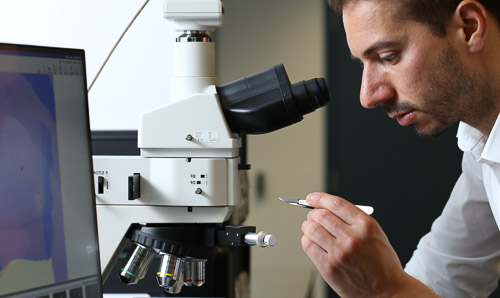
Learn about
If you've ever drawn with a pencil, you've probably made graphene without even noticing. Now, the world's thinnest material is set to revolutionise almost every part of daily life.
Fascination with this material stems from its remarkable physical properties and the potential applications they offer. Although scientists knew one atom thick, two-dimensional crystal graphene existed, no-one had worked out how to extract it from graphite.
That was until it was isolated in 2004 by two researchers at The University of Manchester: Prof Andre Geim and Prof Kostya Novoselov. This is the story of how that stunning scientific feat came about and why Andre and Kostya won the Nobel Prize in Physics for their pioneering work.

Discovery of graphene
Find out more about how this revolutionary was discovered.

Graphene and 2D materials
Discover more about graphene and other 2D materials and their uses.
Making graphene
First isolated in 2004 with nothing more than a lump of graphite and some sticky tape, find out how Manchester researchers are developing production processes for this amazing material.
Read more
Applications
The University is working with industry partners from across the globe to expand the applications of graphene. Find out more about our work in this field and what you might find graphene in.
Read more
